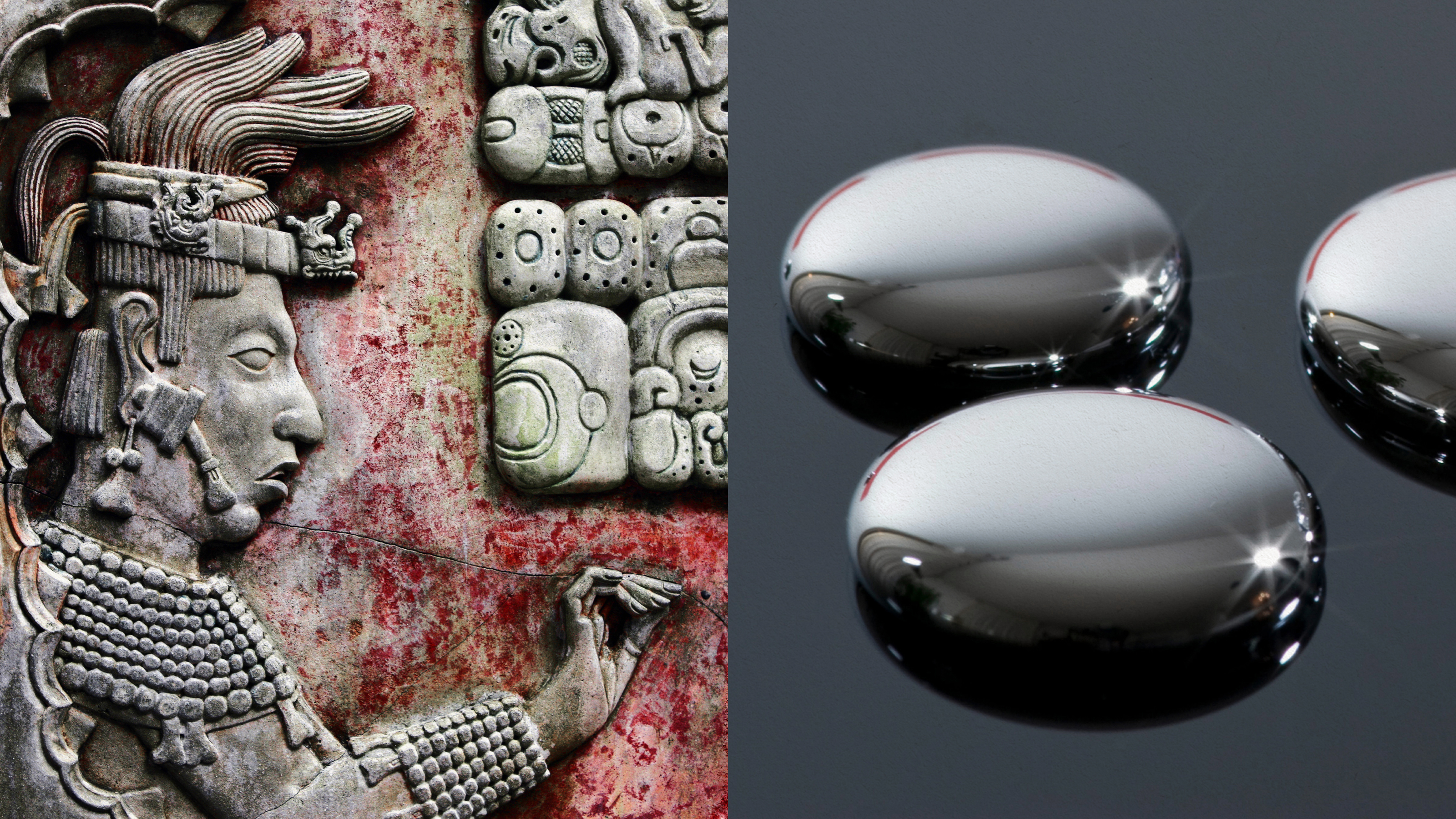The Maya coveted mercury. It may have hastened their downfall.
Today, many Maya sites are polluted with toxic levels of mercury. The contamination likely originated from cinnabar paints and art.

Ross Pomeroy
Mercury is a mesmerizing element. Silvery, lustrous, and liquid and room temperature, it seems like a substance straight out of a fairy tale. In fact, it was long called quicksilver, which literally meant “living silver.” (An archaic use of the word “quick” is to refer to something that is “alive.”) But prolonged exposure can lead to some serious health problems, and archaeologists are now learning that the ancient Maya may have fallen prey to mercury’s sinister beauty.
Persisting for nearly 1,500 years in what is now the Yucatán Peninsula and the countries of Guatemala and Belize, the Maya civilization was one of the most advanced in the ancient world, noted for its unique art, stirring architecture, sophisticated writing, and complex religion. Civil warfare, overpopulation, drought, and environmental degradation caused a harsh downturn in Maya society in the 10th century. Spanish conquistadors would finish off the lingering remnants about 700 years later.
Mesmerized by mercury
Modern archaeologists are now deciphering the remains of this great Mesoamerican society. One thing they’ve gleaned is that the Maya seemed to covet mercury.
Many Maya undoubtedly had an eye for the sublime, and thus were entranced by elemental mercury as well as its vermillion-hued offspring, mercury sulfide, also known as cinnabar. Cinnabar is by far the most prevalent of the two compounds in the archaeological record. Archaeologists have unearthed numerous artifacts made of it and turned up evidence that the Maya extensively used cinnabar-based paints.
More:
https://bigthink.com/the-past/maya-mercury/
